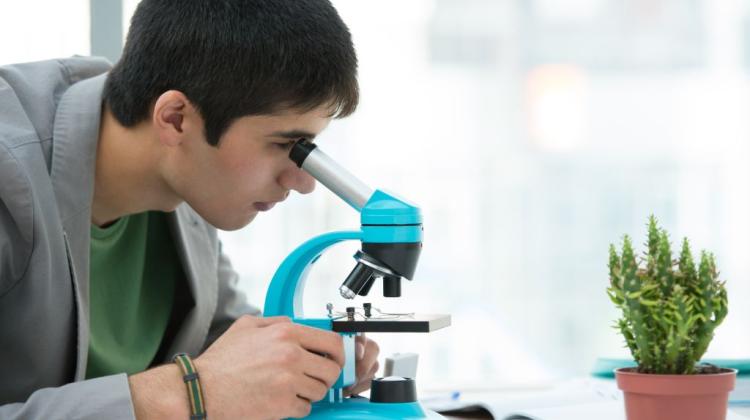What did the origins of life on Earth look like? Bioinformatics experts are checking
 Photo: Fotolia
Photo: Fotolia
How is it possible that life exists on Earth? And that from ordinary elements compounds have formed that can multiply and store information? Simulations on supercomputers help test the hypotheses that explain these phenomena - told PAP bioinformatics expert Prof. Jacek Błażewicz.
Between 4.5 billion and 3.2 billion years ago, a completely incomprehensible thing happened on Earth - life appeared. How was that possible at all? The problem puzzles not only biologists, chemists or physicists, but also computer specialists.
"We investigate how something that could be called the first life had formed from inanimate elements" - told PAP Prof. Jacek Błażewicz, bioinformatics expert from the Institute of Computing Science of the Poznań University of Technology and the Institute of Bioorganic Chemistry of the Polish Academy of Sciences.
He explained that in order to speak of the beginnings of life, at least two conditions should be fulfilled. Firstly, a structure (such as a chemical compound or a complex of chemical compounds) should be able to replicate and, secondly, it should be able to carry information.
DNA - MEMORY, PROTEIN - PROCESSOR, AND RNA - INTERMEDIARY
These basic functions in organisms are divided among three types of molecules: DNA, RNA and proteins. Prof. Błażewicz compared: "DNA is like a long-term memory in a computer - a disk drive or a tape on which information is stored. Proteins, in turn, are like a processor - they process information. RNA is an intermediary that transfers information from DNA to produce proteins. RNA would be something like a microprocessor with a cache" - he said.
At present, none of these three "molecules of life" work alone. However, more and more studies indicate that it was RNA that could form first and lead to the formation of the other two. But the question is: how did that happen?
BRICKS FOR A CRAWLING LIFE: GUGU-GAGA
In this case, the first step in the formation of life would be the formation of RNA-forming ribonucleotides, the nucleobases (adenine, guanine, cytosine or uracil - A, G, C, U). "We proposed a possible chemical reaction pathway that could lead to the formation of nucleotides on Earth. We started from the computational side" - said the professor.
He explained that there must have been a lot of such reactions. It is difficult to carry out an experiment that would confirm that such reactions could have occurred spontaneously. Fortunately, today we can turn to computers (or even supercomputers, as was the case with this study). Simulations allow to check whether the reaction could have occurred and under what conditions.
LIGHTNING STRIKES! OR AT LEAST A METEORITE
In order to create compounds such as nucleic acids from simple components, energy is needed in the system. Historically it had been suggested that lightning could have struck such a "primordial soup". However, Prof. Błażewicz showed that the emergence of nucleotides did not have to be so spectacular. It would be enough if there were metals in this life-giving lake, such as those found in meteorites. These metals would act as catalysts and would make the reaction so much easier that no lightning would be needed to create RNA-forming bricks. And RNA chains could form spontaneously from these bricks.
Bioinformatics experts from Poznań (in addition to Prof. Błażewicz, team members are also Szymon Wąsik, Natalia Szóstak, Jarosław Synak, Marcin Borowski and Francisco Carrascoza) also investigate the further development of life: how could the RNA begin to multiply? One hypothesis is that the bricks in the "primordial soup" began to spontaneously connect in short chains. Among them were two types of RNA. The first one was active - RNA chains that could replicate and duplicate other chains - they functioned like proteins. The second, passive type of RNA was the model - it stored information.
Over time, such division of functions between different types of RNA could lead to the formation of proteins and DNA. "Our simulations have shown that such a system had a chance of survival - it would be stable and resistant to interference - for example mutations" - concluded Prof. Błażewicz. The research was published in PLOS One.
In the next stage, bioinformatics experts want to find out how a membrane that would eventually become cell membrane, began to form around the "molecules of life".
PAP - Science and Scholarship in Poland, Ludwika Tomala
lt/ zan/ kap/
tr. RL
Przed dodaniem komentarza prosimy o zapoznanie z Regulaminem forum serwisu Nauka w Polsce.















